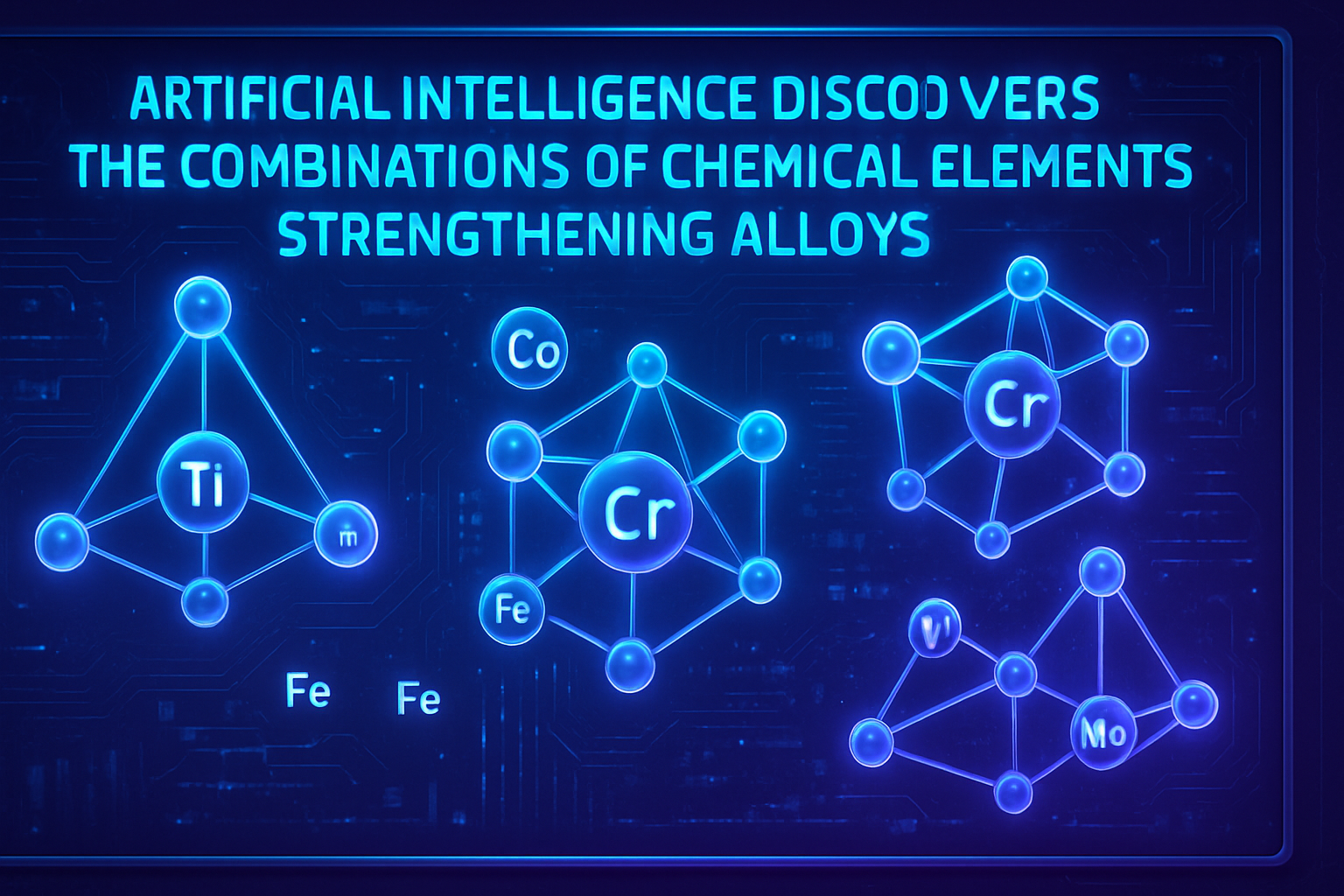The rapid rise of explainable artificial intelligence is revolutionizing the field of advanced materials. Multi-principal element alloys (MPEA), valued for their robustness and durability, are seeing their performances optimized through cutting-edge techniques. With the help of AI, the understanding of elemental interactions paves the way for even more efficient alloys for various applications. Recent results signal significant advances in the design of these materials.
Analysis of the explainable artificial intelligence framework
An explainable artificial intelligence (XAI) framework has recently been highlighted through the work of Sanket Deshmukh, an associate professor of chemical engineering. This device leveraged the power of AI to unveil the secrets of multi-element alloys (MPEA). This innovative discovery process promises to enhance the strength and durability of materials while shedding light on the mechanisms behind their exceptional properties.
Multi-element alloys and their revolutionary advantages
MPEAs, metallic compositions consisting of three or more elements, possess remarkable mechanical properties. They feature exceptional thermal stability, along with high resistance to corrosion and abrasion. Due to their ability to withstand extreme conditions longer than traditional alloys, these materials are particularly suited for applications in aerospace, medical devices, and renewable technologies.
Knowledge transfer through artificial intelligence
Deshmukh and his team integrated machine learning algorithms and evolutionary methods into this research. This research model, distinct from traditional approaches, processes data and simulations more efficiently. One of the main advantages of XAI lies in its ability to provide insights into the decision-making processes of AI, thus dispelling the myth of the “black boxes” of machine learning.
Assessment and optimization mechanisms
The technique named SHAP (SHapley Additive exPlanations) allows researchers to interpret AI predictions. This analysis reveals how the presence of different elements and their local environments impact the properties of MPEA. A prophetic approach then emerges, leading to an optimization of element combinations according to specific applications.
Interdisciplinary collaboration and practical application
Deshmukh has collaborated with experts from various institutions, such as Tyrel McQueen from Johns Hopkins University. Their work highlights the potential for synergy between computational biomaterials and synthetic inorganic materials. This team has broadened its scope, aiming to design new glycomaterials for varied applications such as food additives and health products.
Sustainability of research and future innovations
The advances made illustrate not only the transformative scope of this research but also its potential to disrupt the field of materials science. In the experimental room, the methods were tested to prove the viability of innovative approaches, thereby propelling knowledge acquisition beyond established experiments. This work paves the way for future discoveries in complex systems.
This interdisciplinary approach highlights how collaborations between computation, synthesis, and characterization can catalyze significant breakthroughs. The research has directly produced transferable tools, capable of being used in various contexts, including those related to biotechnology.
The implications of this research are vast. Researchers envision applications that extend far beyond traditional materials, notably in the fields of health, packaging, and personal care.
Link to additional information
For a deeper look into the use of AI in these processes, check out this article on the implications of AI explainability. The growing efforts in these emerging fields are redefining the boundaries of contemporary materials science.
Frequently asked questions about explainable artificial intelligence and alloys
What is explainable artificial intelligence and how does it apply to alloy design?
Explainable artificial intelligence (XAI) allows us to understand the decision-making processes of AI models. In the context of alloy design, it helps analyze how combinations of elements affect the strength and durability of materials, thus providing more reliable predictions.
How does the use of explainable AI improve the alloy design process?
It makes the process faster and more efficient by reducing the necessary iterations and providing insights into interactions between elements, allowing for better optimization of alloy composition for specific applications.
What are the advantages of multi-element alloys compared to traditional alloys?
Multi-element alloys exhibit better corrosion resistance, greater durability, and increased mechanical strength. These properties make them ideal for applications in demanding sectors such as aerospace and medicine.
How do specific elements affect the mechanical properties of alloys?
Each metallic element contributes differently to the properties of the alloy. For example, some may improve tensile strength, while others enhance ductility or heat resistance. Explainable AI allows for modeling these complex interactions.
What distinguishes MPEA alloys from other types of alloys?
MPEA alloys, composed of multiple principal elements, are designed to offer a unique combination of features, including excellent thermal stability and exceptional resistance under extreme conditions, unlike traditional alloys which often rely on one or two dominant elements.
What types of applications benefit from the design of alloys through explainable AI?
Applications include not only the aerospace and medical sectors but also renewable energy technologies and electronic devices, where more robust and reliable materials are essential.
How can the results obtained through explainable AI influence the future of materials?
The results enable the development of new materials with optimized properties, facilitating the transition towards sustainable innovations, thus paving the way for significant advances in various industries.
Are there limitations to using explainable AI in alloy design?
While explainable AI offers many advantages, it relies on the quality of the input data. Incomplete or biased data can skew results. Additionally, interpreting the results may require specialized knowledge in materials science.
How do researchers validate results generated by the explainable AI framework?
Researchers validate the results through experimentation and physical testing, comparing the AI predictions to the observed behaviors of the designed alloys, thus ensuring the robustness of the conclusions drawn.






